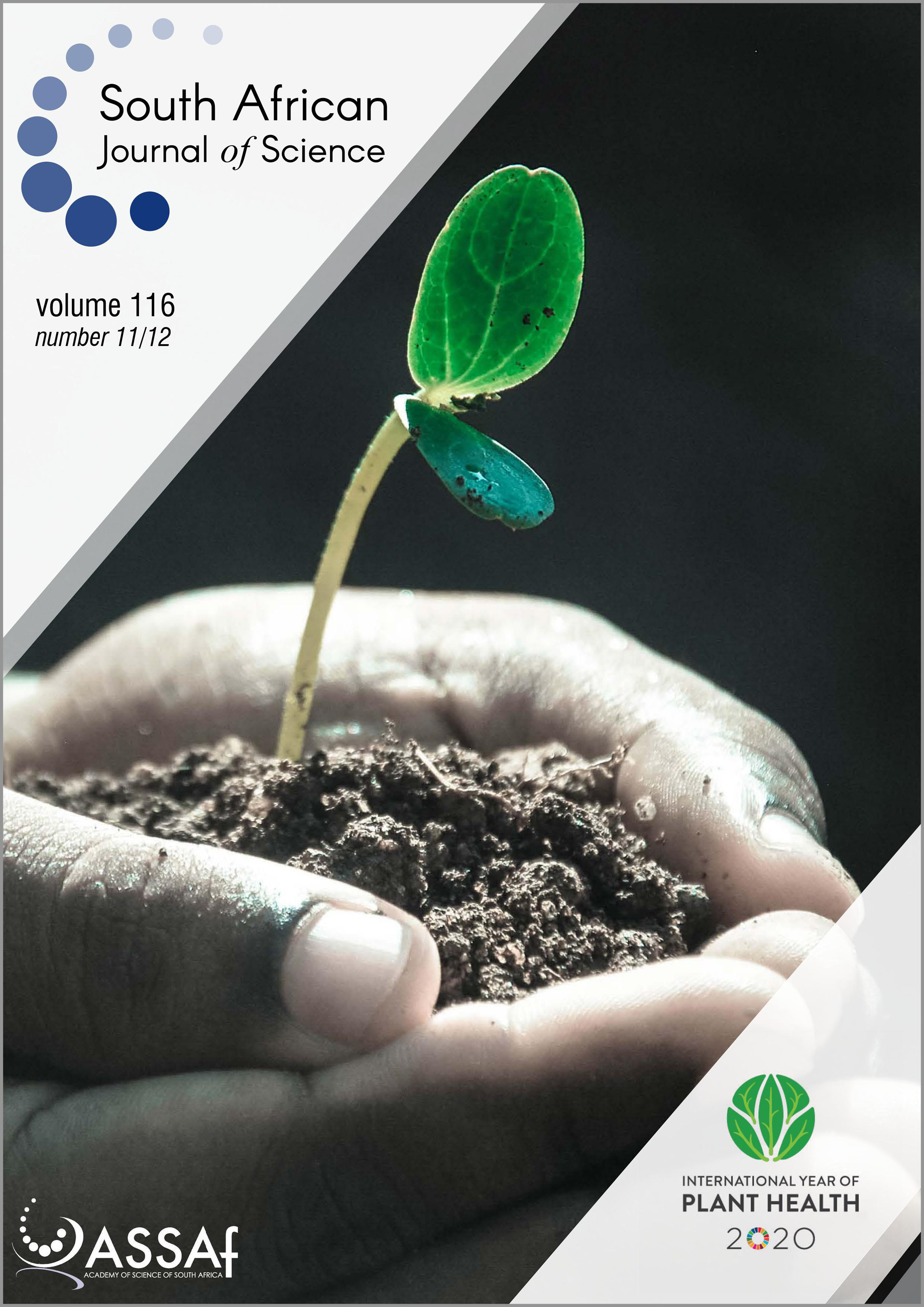Progress in the management of Fusarium head blight of wheat: An overview
DOI:
https://doi.org/10.17159/sajs.2020/7854Keywords:
Fusarium graminearum, Gibberella zeae, disease management, head scab, cereal grainAbstract
Fusarium head blight (FHB), also known as head scab, is a devastating fungal disease that affects small grain cereal crops such as wheat (Triticum aestivum L.). The predominant causal agent, Fusarium graminearum Schwabe (teleomorph: Gibberella zeae (Schwein.) Petch), is ranked the fourth most important fungal plant pathogen worldwide. Apart from yield and quality losses, mycotoxin production can occur from FHB infection, resulting in harmful effects on human and animal health. Some level of disease control may be achieved by using certain fungicides and agronomic practices plus host resistance. In South Africa, there are currently no registered fungicides or bio-fungicides, no resistant wheat cultivars and only limited control is achieved by cultural practices. Because effective disease reduction cannot be achieved by using a single strategy, the integration of multiple management strategies can enhance disease control. We review possible strategies for reducing the risk for FHB infections that are relevant to the context of South Africa and other wheat growing areas in Africa.
Significance:
- The importance of the effect of FHB on wheat cannot be overemphasised. This review highlights and describes the various control options and their efficacies. It also describes the current state of research in an effort to control FHB and its associated mycotoxins.
- Wheat is one of the most produced crops worldwide and in South Africa, hence this review could promote and intensify research towards the development of more effective management strategies for FHB of wheat.
Published
Issue
Section
License

All articles are published under a Creative Commons Attribution 4.0 International Licence
Copyright is retained by the authors. Readers are welcome to reproduce, share and adapt the content without permission provided the source is attributed.
Disclaimer: The publisher and editors accept no responsibility for statements made by the authors
How to Cite
- Abstract 1454
- PDF 1130
- EPUB 181
- XML 298












.png)